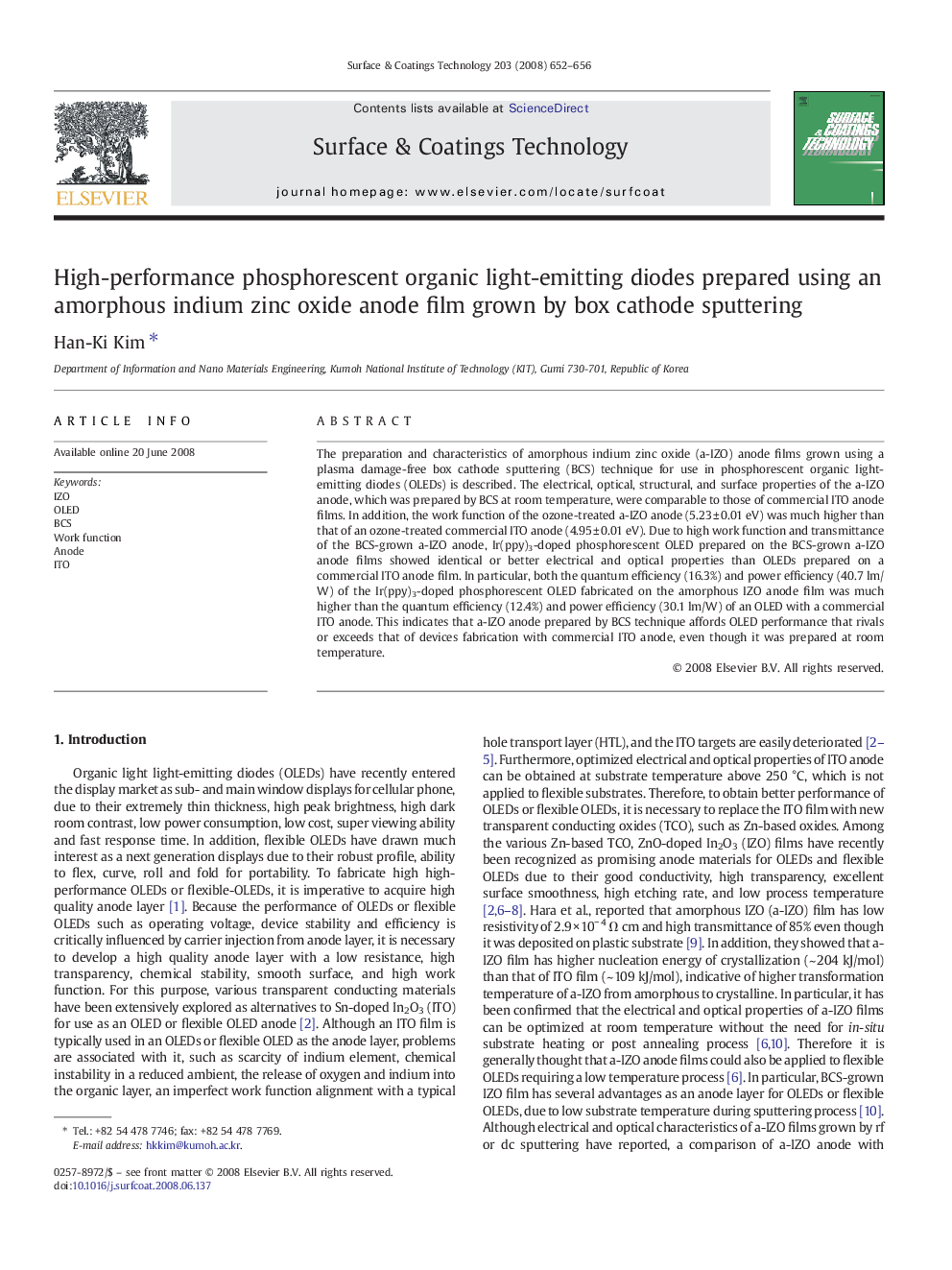| Article ID | Journal | Published Year | Pages | File Type |
|---|---|---|---|---|
| 1660017 | Surface and Coatings Technology | 2008 | 5 Pages |
The preparation and characteristics of amorphous indium zinc oxide (a-IZO) anode films grown using a plasma damage-free box cathode sputtering (BCS) technique for use in phosphorescent organic light-emitting diodes (OLEDs) is described. The electrical, optical, structural, and surface properties of the a-IZO anode, which was prepared by BCS at room temperature, were comparable to those of commercial ITO anode films. In addition, the work function of the ozone-treated a-IZO anode (5.23 ± 0.01 eV) was much higher than that of an ozone-treated commercial ITO anode (4.95 ± 0.01 eV). Due to high work function and transmittance of the BCS-grown a-IZO anode, Ir(ppy)3-doped phosphorescent OLED prepared on the BCS-grown a-IZO anode films showed identical or better electrical and optical properties than OLEDs prepared on a commercial ITO anode film. In particular, both the quantum efficiency (16.3%) and power efficiency (40.7 lm/W) of the Ir(ppy)3-doped phosphorescent OLED fabricated on the amorphous IZO anode film was much higher than the quantum efficiency (12.4%) and power efficiency (30.1 lm/W) of an OLED with a commercial ITO anode. This indicates that a-IZO anode prepared by BCS technique affords OLED performance that rivals or exceeds that of devices fabrication with commercial ITO anode, even though it was prepared at room temperature.
